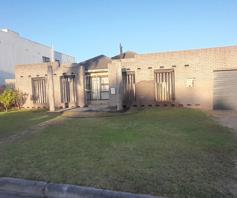Buying an offshore property in a stable political climate such as the UK is an excellent way to protect yourself, and your family, against local economic and political uncertainty, says Mike Smuts of Smuts & Taylor.

Prime central London property prices now stand over 60 percent higher than their market low in March 2009.
According to Smuts, London has been the crown jewel of the global property market for more than a decade.
It is also a powerhouse of the UK economy, with a financial services industry that retained its global status even in the wake of the financial crisis.
The city is home to a highly skilled workforce drawn from around the world and functioning international and domestic transport links.
Smuts notes that the European Cities Monitor has ranked London as the number one European city in which to locate a business, the position it has held for 21 consecutive years.
Global Financial Centres Index ranks London as number one - outperforming both New York and Hong Kong and 70 percent of Fortune 500 companies have their European HQs in London.
Importantly though, Smuts says London property is the new “Swiss Bank Account” with a prime London house now well over 50 percent higher than the bottom credit crunch in March 2009.
“That’s more than 21 percent above the previous peak in March 2008,” he says.
He notes that South African investors are not the only ones to seek safety and security in offshore property.
“More than £2.2 billion was invested into London residential property by foreign buyers in 2012 and £4.15 billion invested in the central London office market in the first half of 2013.”

Located at One Hyde Park, the first European Residences at Mandarin Oriental, one of the most exclusive addresses in the world, this three bedroom apartment is on the market. Price available on application. Click here to view.
According to Knight Frank 2013 Wealth Report property accounts for the largest share of High Net Worth Individuals' (HNWIs) investment portfolios, averaging 22 percent globally, with portfolio allocations increasing sharply and predicted to rise further this year.
“Prime residential and commercial property in relatively risk-free locations has always attracted investors in times of economic and political turbulence,” says Smuts.
SA’s rich investors’ property assets reveals that in 2011, real estate was the largest asset class for HNWIs in South Africa (27.8 percent of total HNWI assets), followed by equities (25.0 percent), cash (13.8 percent), business interests (12.8 percent), fixed income (12.8 percent) and alternatives (7.7 percent).
“There is something comforting about tangible assets that, barring natural disaster will retain their inherent value over time, even if prices dip in the short term,” points out Smuts.
According to WealthInsight data, London was ranked number one in the Top 20 cities for the world’s ultra wealthy boasting 4 224 millionaires followed by Tokyo (3 525), Singapore (3 154), New York City (2 929) and Hong Kong (2 560).
The same data also notes that London is the number 3 city ranked by billionaires 2012 with (54 billionaires); in the first position is New York City with 70 billionaires followed by Moscow with 64.
In number four spot is Hong Kong with 40 billionaires and in fifth position is Beijing with 20 billionaires.
Buying property in London
The city was the last global market to go down in value, first global market to recover, hence the prime London home values of 50 percent currently.

Smuts says London property is the new “Swiss Bank Account” with a prime London house now well over 50 percent higher than the bottom credit crunch in March 2009.
What’s more, rents in Greater London average £1.177 per month – the HomeLet index shows that rents have risen an average of 6 percent across the capital in the last year, 16 percent in the last two and 32 percent since 2009.
For South Africans looking to buy, he says investors can enter the London property market with as little as R1 million and mortgage finance of up to 70 percent is available.
Many of their buyers purchase in the £300 000 to £800 000 range, generating a gross yield of 5.5 – 6 percent, he says.
Property prices in London
According to Knight Frank data, prime central London property prices continued to rise in August, but there are indications that buyers are becoming more resistant to continued price rises, especially at the top of the market.
Liam Bailey, global head of residential research at Knight Frank, explains that prices in London’s best postcodes increased by 0.6 percent and this rise marks the 34th consecutive month that prices in the prime market have increased and takes the total rise so far this year to 4.8 percent.
“Prime central London property prices now stand over 60 percent higher than their market low in March 2009,” says Bailey.

For South Africans looking to buy, he says investors can enter the London property market with as little as R1 million and mortgage finance of up to 70 percent is available.
Marylebone and Notting Hill recorded the largest rise of 1.5 percent and 1 percent respectively. Islington, City Fringe and Hyde Park all reported price growth of 0.9 percent in August.
According to data, the number of new home applicants is up by 33.9 percent over the year to date compared to the same period in 2012 and the number of property viewings conducted is up by 18.5 percent.
While the headline figures suggest healthy price growth across the market, we are experiencing varied price performance across prime central London. Price growth in Belgravia, St John’s Wood, South Kensington and Chelsea for example was either unchanged or up by just 0.1 percent in August, says Bailey.
“This indicates that buyers, especially those at the top end of the market, are becoming more resistant to ongoing price growth.”
Price rises in prime central London are primarily being driven by homes in the sub-£1 million and £2.5 million price bracket and these homes have increased by around 1 percent in August and are up by 8.7 percent and 7 percent respectively over the year to date, points out Bailey.
Homes priced between £5 million and £10 million+ increased in value by 0 percent and 0.2 percent month-on-month and are up by 2.6% and 1.6% respectively so far in 2013.
Bailey points out that it appears that annual price growth in Greater London is now outstripping prime central London having risen by 8.1 percent over the past 12 months while prime central London price growth is 7 percent.
The rise in prices across Greater London has been aided by London’s continued economic recovery and, arguably, from the Government’s Help to Buy scheme, which was launched at the end of Q1 this year and has boosted sentiment across the market, according to Bailey. – Denise Mhlanga









